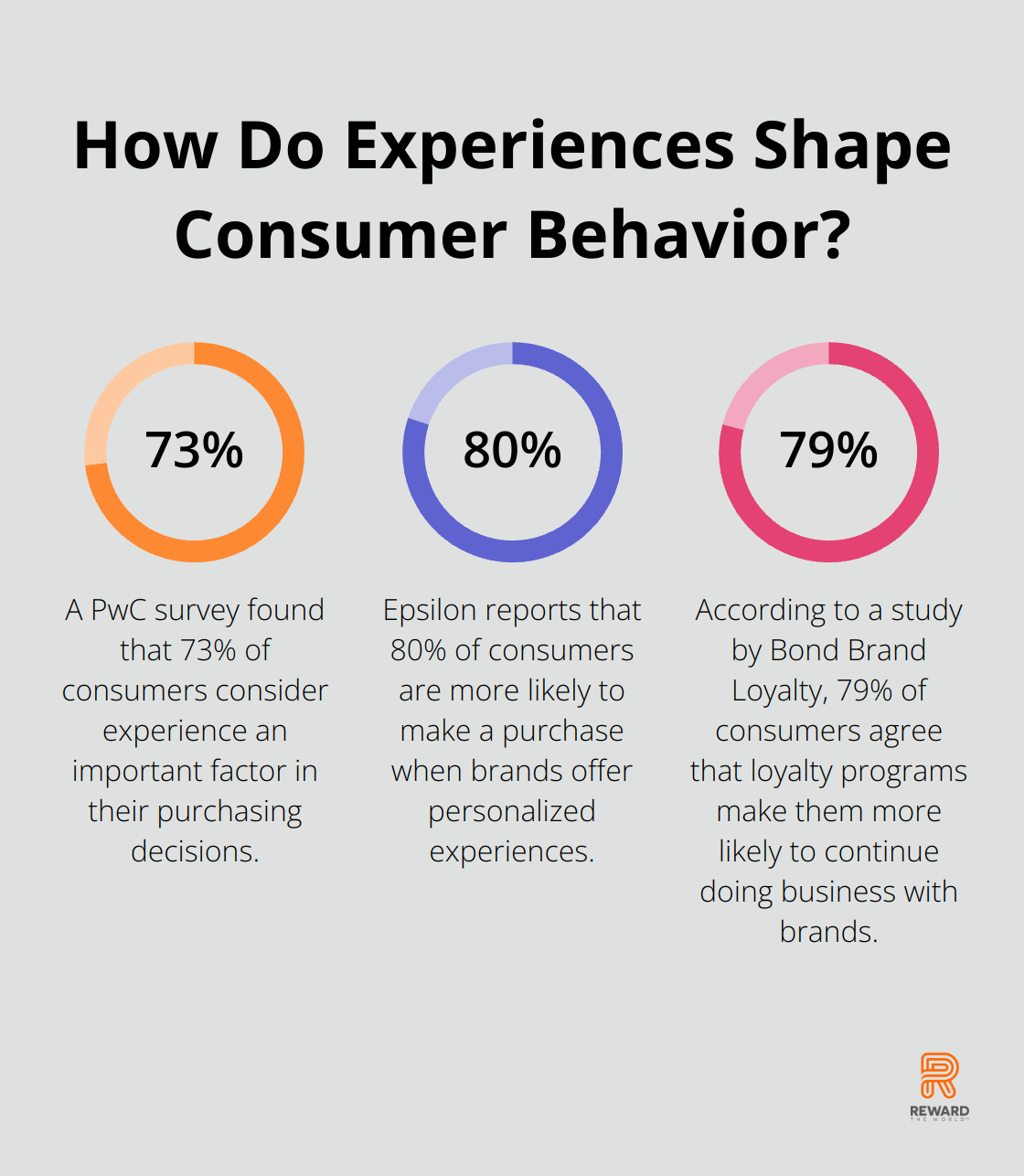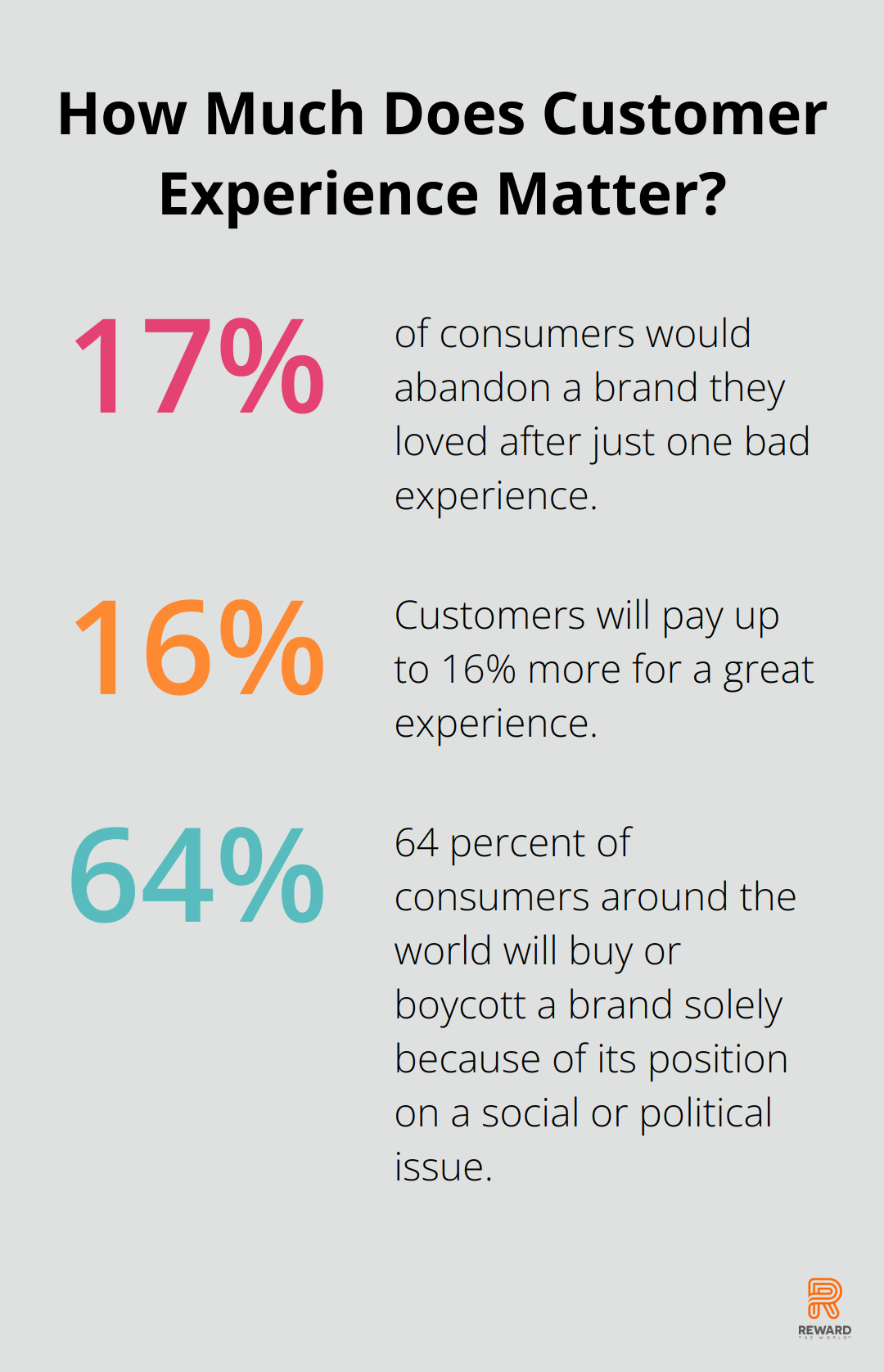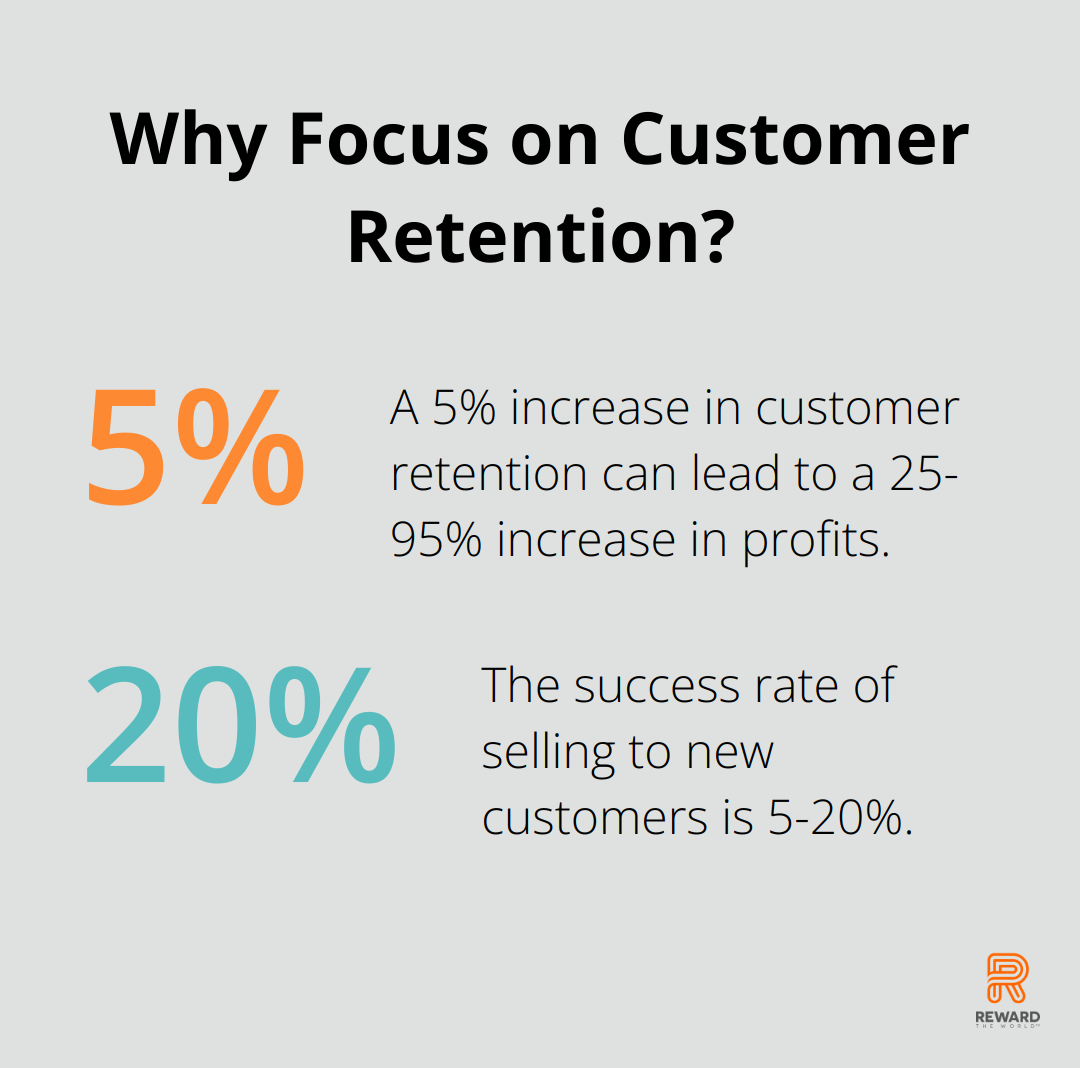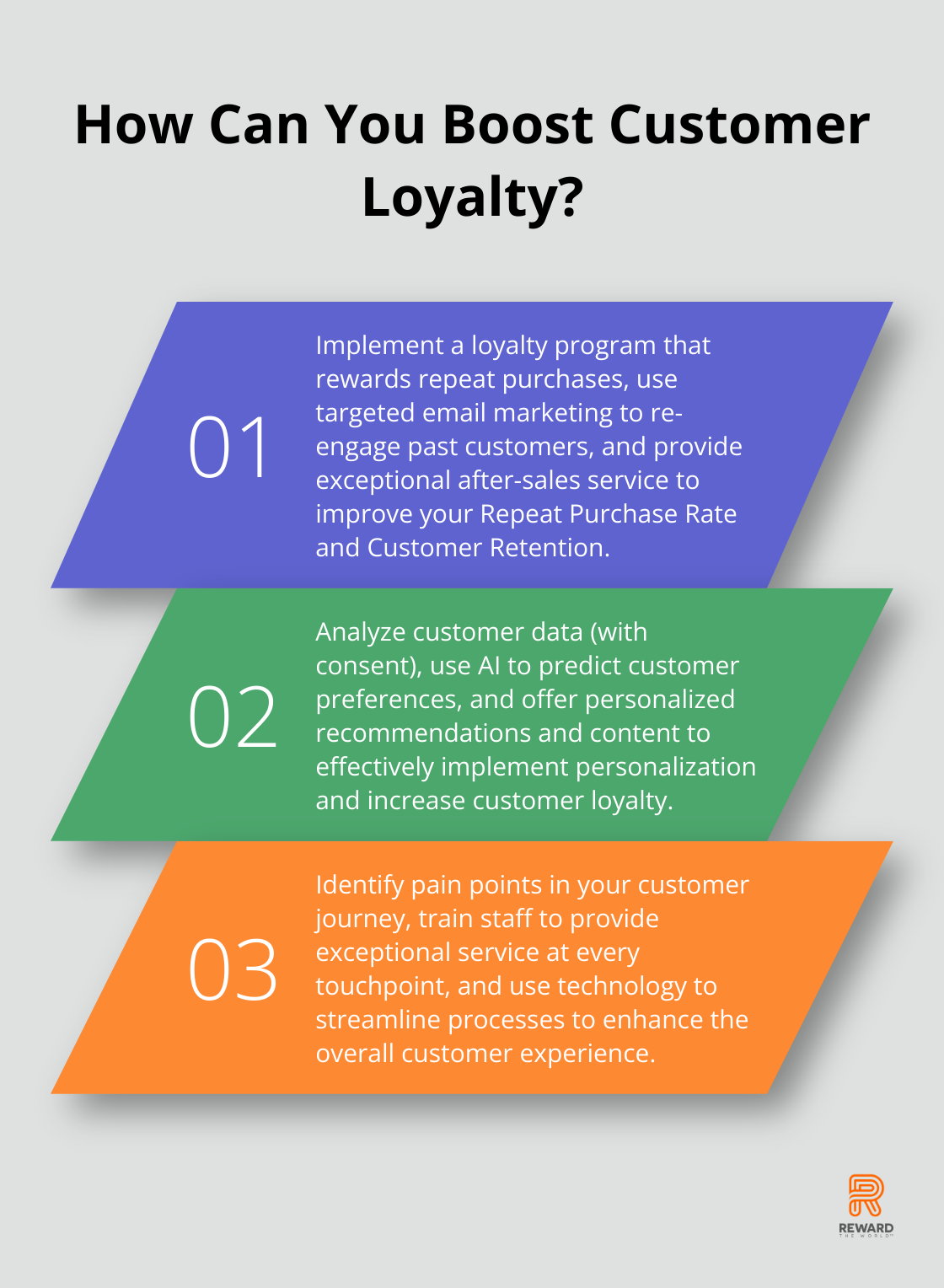
Customer loyalty is the backbone of successful businesses. At Reward the World, we’ve seen firsthand how loyal customers drive growth and profitability.
But what exactly is the meaning of customer loyalty in business? This post explores the concept, its key drivers, and how to measure it effectively.
What Drives Customer Loyalty?
The Essence of Customer Loyalty
Customer loyalty transcends repeat purchases. It’s about forging a powerful emotional bond between your brand and customers. At its heart, customer loyalty means customers consistently choose your business over competitors, even when presented with alternatives.
Two Dimensions of Loyalty
Customer loyalty comprises two main components: behavioral and attitudinal. Behavioral loyalty is visible – it’s when customers repeatedly buy from you. Attitudinal loyalty, however, is where true magic unfolds. This occurs when customers feel a genuine connection to your brand, transforming into advocates who recommend you to others.
The Impact of Loyalty on Business
The significance of customer loyalty cannot be overstated. A study by Bain & Company revealed that increasing retention by as little as 5% can boost profits by as much as 95%. Loyal customers are not just repeat buyers; they become your brand’s most effective ambassadors.
Experience: The Loyalty Catalyst
Exceptional experiences form the foundation of loyalty. A PwC survey found that 73% of consumers consider experience an important factor in their purchasing decisions, behind price and product quality. This underscores the need for excellence in every interaction, from website browsing to post-purchase support.
Personalization: The Loyalty Accelerator
Personalization plays a pivotal role in nurturing loyalty. Epsilon reports that 80% of consumers are more likely to make a purchase when brands offer personalized experiences. This can range from simple gestures (like addressing customers by name) to complex strategies (such as tailoring product recommendations based on purchase history).
The Role of Rewards in Loyalty Building
Reward programs serve as powerful tools for reinforcing loyalty. According to a study by Bond Brand Loyalty, 79% of consumers agree that loyalty programs make them more likely to continue doing business with brands. Effective reward systems can significantly enhance customer engagement and foster long-term loyalty.

As we explore the key factors that drive customer loyalty, it’s essential to understand how to measure its impact effectively. Let’s examine the metrics that can help businesses gauge and improve their customer loyalty strategies.
What Drives Customer Loyalty?
Customer loyalty doesn’t happen by chance. It results from strategic planning and consistent execution. Let’s explore the key factors that transform casual buyers into devoted brand advocates.
Quality: The Foundation of Loyalty
Product or service quality forms the bedrock of customer loyalty. A study by American Express revealed that 90% of Americans consider customer service when deciding to do business with a company. High-quality offerings build trust and reduce customer churn.

To maintain quality:
- Implement strict quality control measures
- Act on customer feedback regularly
- Innovate and improve your offerings continuously
Customer Experience: The Loyalty Multiplier
Exceptional experiences convert customers into fans. PwC reports that in the U.S., 17% of consumers would abandon a brand they loved after just one bad experience. Conversely, customers will pay up to 16% more for a great experience.
To enhance customer experience:
- Identify pain points in your customer journey
- Train staff to provide exceptional service at every touchpoint
- Use technology to streamline processes
Brand Values: The Emotional Connection
Shared values create strong bonds. Edelman reports that nearly two-thirds (64 percent) of consumers around the world will buy or boycott a brand solely because of its position on a social or political issue.
To leverage brand values:
- Define and communicate your brand’s mission clearly
- Take authentic stands on issues aligned with your brand
- Demonstrate commitment through actions
Personalization: The Loyalty Accelerator
Tailored experiences make customers feel valued. Epsilon reports that 80% of consumers are more likely to purchase when brands offer personalized experiences.
To implement effective personalization:
- Analyze customer data (with consent)
- Use AI to predict customer preferences
- Offer personalized recommendations and content
Rewards: The Loyalty Booster
Well-designed reward programs significantly enhance loyalty. The 2020 Bond Loyalty Report found that 79% of consumers say loyalty programs increase their likelihood of continued business with brands.
To create an effective rewards program:
- Offer a mix of transactional and experiential rewards
- Simplify the process of earning and redeeming rewards
- Update your rewards regularly to maintain excitement
Customer loyalty requires a holistic approach that addresses all these factors consistently. The next section will explore how to measure the impact of these loyalty-driving strategies effectively.
How to Measure Customer Loyalty
Measuring customer loyalty provides valuable insights into the effectiveness of your strategies and highlights areas for improvement. Multiple metrics offer a comprehensive view of customer loyalty. Let’s explore key metrics and their effective use.
Net Promoter Score (NPS)
NPS measures customer satisfaction and loyalty by asking customers to rate their likelihood of recommending your business to others on a scale of 0-10. Customers fall into three categories: Promoters (9-10), Passives (7-8), or Detractors (0-6).

To calculate NPS, subtract the percentage of Detractors from the percentage of Promoters. A positive score indicates good performance, while a score above 50 signifies excellence. Companies with the highest NPS in their industry often outgrow their competitors by at least 2x.
To improve your NPS:
- Address concerns of detractors
- Understand what pleases promoters
- Make changes based on customer feedback
Customer Lifetime Value (CLV)
CLV estimates the total revenue a business can expect from a single customer account throughout their relationship. This metric helps determine appropriate investment levels for customer acquisition and retention.
Calculate CLV by multiplying the average purchase value by the average purchase frequency rate and the average customer lifespan.
To improve CLV:
- Implement cross-selling and upselling strategies
- Enhance customer service to extend customer lifespan
- Use personalized marketing to increase purchase frequency
Repeat Purchase Rate and Customer Retention
Repeat Purchase Rate measures the percentage of customers who make additional purchases after their first buy. Customer Retention Rate measures the percentage of customers who continue to do business with you over time.
A 5% increase in customer retention can lead to a 25-95% increase in profits. The success rate of selling to an existing customer (60-70%) far exceeds that of new customers (5-20%).
To improve these metrics:
- Implement a loyalty program that rewards repeat purchases
- Use targeted email marketing to re-engage past customers
- Provide exceptional after-sales service
Share of Wallet
Share of Wallet measures the percentage of a customer’s total spending in a category that goes to your business. It indicates customer loyalty and your competitive position.
To improve your share of wallet:
- Focus on increasing spend from your most valuable customers
- Expand your product or service offerings
- Use bundling strategies to encourage more purchases
These metrics provide valuable insights into your customer loyalty efforts. Improving customer loyalty requires continuous effort and adaptation. Loyalty programs play a significant role in fostering customer loyalty and can help businesses track and improve these metrics effectively.
Final Thoughts
Customer loyalty forms the foundation of business success. It extends beyond repeat purchases to create deep emotional connections between brands and consumers. The customer loyalty meaning in business encompasses consistent purchases and powerful brand advocacy, which significantly impact a company’s profitability.

Businesses must focus on delivering excellence across product quality, customer experiences, brand values, personalization, and reward programs to build strong customer relationships. Measuring loyalty through metrics like Net Promoter Score, Customer Lifetime Value, and Repeat Purchase Rate provides valuable insights for enhancing loyalty initiatives.
Loyalty programs offer a structured way to reward and engage customers, encouraging repeat purchases and brand advocacy. Reward the World provides a comprehensive solution for businesses to implement or enhance their loyalty strategies (with global reach and diverse reward options). Companies can create lasting relationships with their customers by leveraging powerful tools like loyalty programs, ensuring long-term success and sustainable growth.
